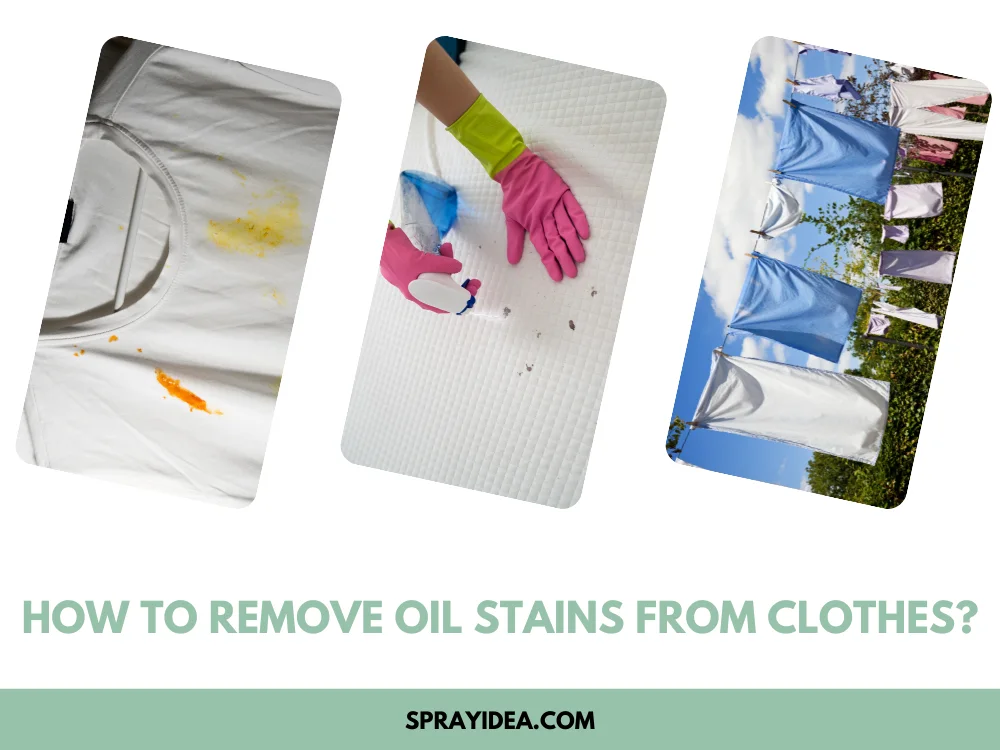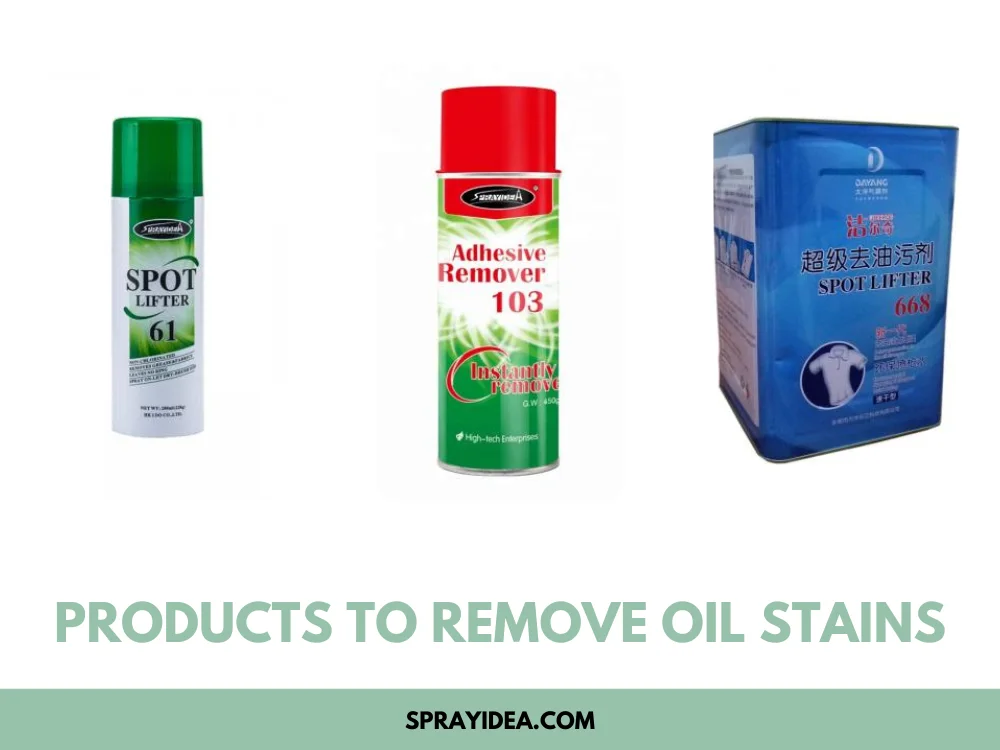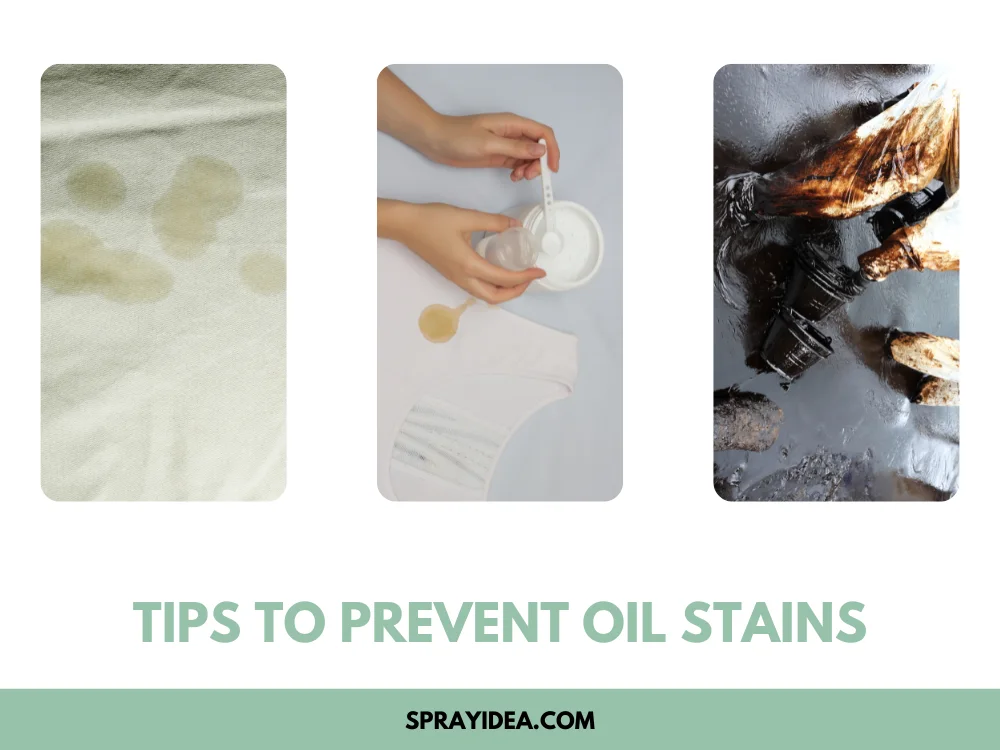Removing oil stains from clothes is one of the most frustrating experiences on laundry day. These pesky spots can ruin clothing, whether a cooking grease splatter or motor oil. Fortunately, there are effective methods you can use to remove those stubborn oil marks and save your garments.
This blog post will explore how to spot-treat holistically using the best ingredients. This approach would help you to remove even the toughest grease or oil marks. Read on for all the tips and tricks to restore your pieces to their original condition.
Why is it difficult to remove oil stains from clothes?
Due to their resilient nature, oil stains are difficult to remove from clothes. When oil comes into contact with clothing, it will stick to the fibers on the fabric. And once it settles down, you can’t remove it with ordinary laundry detergents and soaps. Why? Because it’s difficult to break up the oil molecules so you can wash them away easily.
That’s why removing oil stains requires a unique cleaning process. Most involve using heat, degreasers, heavy-duty cleaners, and other powerful chemicals to break down the molecules. Additionally, certain fabrics are more resistant than others, like polyester and rayon. So when removing an oil stain on clothes, these fabrics repel water-based solutions. What do I need to do then? Simple. Follow the exact strategy we’re going to reveal now.
A step-by-step guide on how to get oil stains out of clothes
It’s a familiar scene: You put on your favorite shirt and discover a tell-tale stain. What do you do? Don’t worry. This step-by-step guide lets you quickly and easily remove any type of stain from your clothes. No matter how tough or stubborn it may be.

Step 1: Checking the Care Label
Before attempting to remove an oil stain, it is important to check the care label on your garment to determine what kind of fabric it has. This will help you choose the appropriate cleaning products and identify any special instructions for washing that fabric.
Step 2: Pretreating the Stain
Once you have identified the type of fabric, it is time to pretreat the stain. To do this, dab a pre-wash solution such as Fast Dry Chemical Formula Liquid Detergent Oil Stain Remover Detergent directly on the stained area. Rub the detergent gently into the fabric in a circular motion and leave it for 10-15 minutes before washing. This will help to break down and lift the oil from the fabric.
Step 3: Let the Detergent Sit
If you are dealing with a particularly stubborn stain, it is important to let the detergent sit on the fabric for 10-15 minutes before washing it in warm water. This will give the detergent enough time to break down the oil and make it easier to remove during the wash cycle.
Step 4: Washing According to Instructions
Once you have allowed the detergent to sit, follow the care instructions on your garment for washing in warm water. Make sure you select a gentle cycle if possible, as this could cause further damage to the fabric if you opt for a more vigorous cycle.
Step 5: Soaking and Rinsing
Once the wash cycle is complete, it is important to use an extra soak and rinse cycle. This will ensure that all detergent traces are no longer on the stained garment. This will help prevent further damage or discoloration caused by any leftover detergent residue.
Step 6: Drying the Garment
Once you have finished washing and rinsing the item, hang it up to dry or tumble dry it if possible. Ensure you check frequently and do not over-dry the fabric, as this can make any stains more difficult to remove later.
Step 7: Using an Enzyme Detergent Booster
If you still have traces of a stain left after drying, repeat steps 1-3 before laundering again. This time, use an enzyme detergent booster such as BioTex Enzymatic Booster to help break down proteins in difficult stains like blood, egg, and coffee. This will help eliminate any stubborn oil stains that may have been left behind. Follow the instructions on the detergent booster and launder according to the care label instructions. Once finished, hang up or tumble dry as before.
Following these seven steps should help you successfully remove oil stains from your clothing. If you need help with these methods for your particular garment, we recommend seeking advice from a professional cleaner to avoid further damage.
What to do if the stain doesn’t come out after washing?
If the stain doesn’t come out after washing, it can be helpful to use a laundry pre-treatment product. Pre-treatments are designed to penetrate deep into fabric fibers and loosen tough stains before laundering. Most pre-treatment products are applied directly to the stained area and allowed to sit for several minutes before washing. Depending on the type of pre-treatment and the stain, it might need to be allowed to sit for up to several hours. After applying the pre-treatment, wash the clothing as usual with detergent and hot water.
If a pre-treatment doesn’t work, consider using a more powerful cleaning method, such as bleaching or spotting. When using bleach, always use the correct type and concentration of the chemical. People often use sodium hypochlorite for laundry purposes. If spotting is necessary, apply a spot remover product directly to the stained area and then launder as usual. It’s important to note that these methods can be harsh on fabrics, so it is always recommended to spot-test them in an inconspicuous area first.
If the stain still doesn’t come out after using pre-treatments and other cleaning methods, you may need professional help from a dry cleaner or laundry service. These services have specialized equipment and products that can remove even the toughest stains.
Finally, if the stain is particularly stubborn and you can’t remove it by any of the methods above, then simply replace the item. It’s always a good idea to keep an eye on tough stains and act quickly before they set in.
Which product is the best to use for removing stains from clothes?
This can be tricky to answer, as different types of stains require different treatments. However, Sprayidea 61 Spot Lifter For Fabrics Oil Grease Oil Stain Remover is one of the best options for general-purpose stain removal. It removes oil and grease-based stains quickly and effectively, and its advanced chemical formula penetrates deep into the fabric to ensure thorough removal.

Sprayidea 103 Adhesive Glue Removing Spray Strong Penetration Sticker Detergent is an excellent alternative for tougher stains. It contains strong solvents and detergents that can dissolve even the toughest adhesive residues and grease and oil-based stains.
Finally, Sprayidea 668 Fast Dry Chemical Formula Liquid Detergent Oil Stain Remover is the perfect solution for a fast-drying, robust solution to oil stains. It contains special enzyme-based solvents that act quickly to break down and remove even the toughest oil stains.
All three of these products are highly effective in removing stains from clothes, so you can’t go wrong with them. Just follow the instructions carefully and always test a small area on an inconspicuous part of the fabric before treating the whole garment.
How to prevent oil stains from happening in the first place?
Here are a few precautions to avoid oil stains in the first place:

- Ensure to wipe any excess oil from the surface before it can dry.
- Clean up spills as soon as possible. Use an absorbent material like kitty litter or baking soda to soak it up quickly.
- Apply a pre-wash detergent and let it sit for 15 minutes before washing.
- If an oil stain does occur, use a spot remover product to treat it.
- To prevent future stains, keep the area clean and dry. This will help limit the spread of any oil that may be present.
- Avoid wearing clothes or shoes that have been exposed to oil. Otherwise, they can transfer the oil onto other surfaces.
- Use a sealant like wax or polyurethane to coat the surface. This makes it easier to clean up small spills quickly.
- Read the directions and follow safety guidelines when working with petroleum-based products.
- Avoid overfilling containers that hold oil, which can cause spills.
- Wear appropriate protective clothing when handling oil and related products.
Conclusion
When removing oil stains, it’s important to remember to act fast and use the right techniques. The sooner you tackle these stains, the better off you’ll be. If done correctly, this process doesn’t have to require a significant amount of time or effort. Follow these simple steps, and you’ll soon have clean clothes. Now wow your friends by showing them how well you can keep your wardrobe stain-free.
